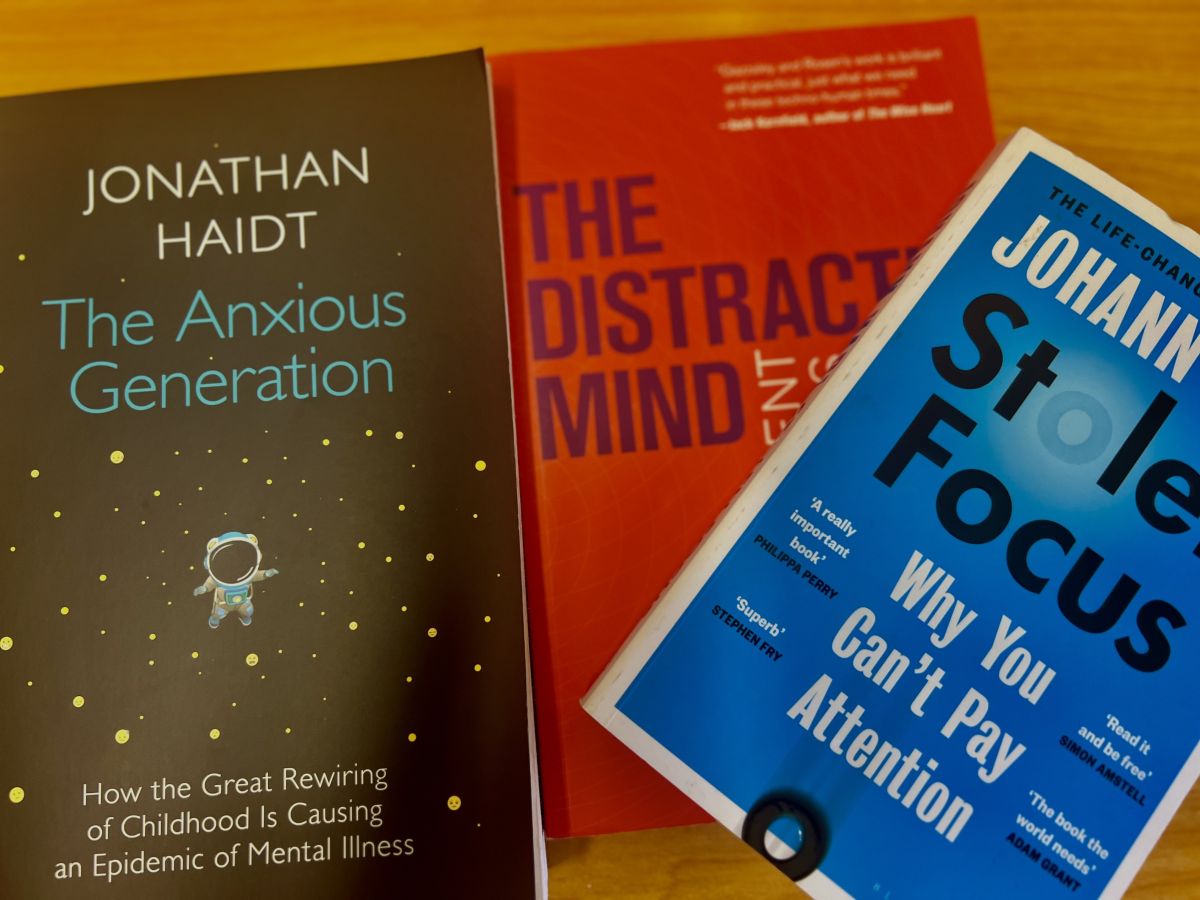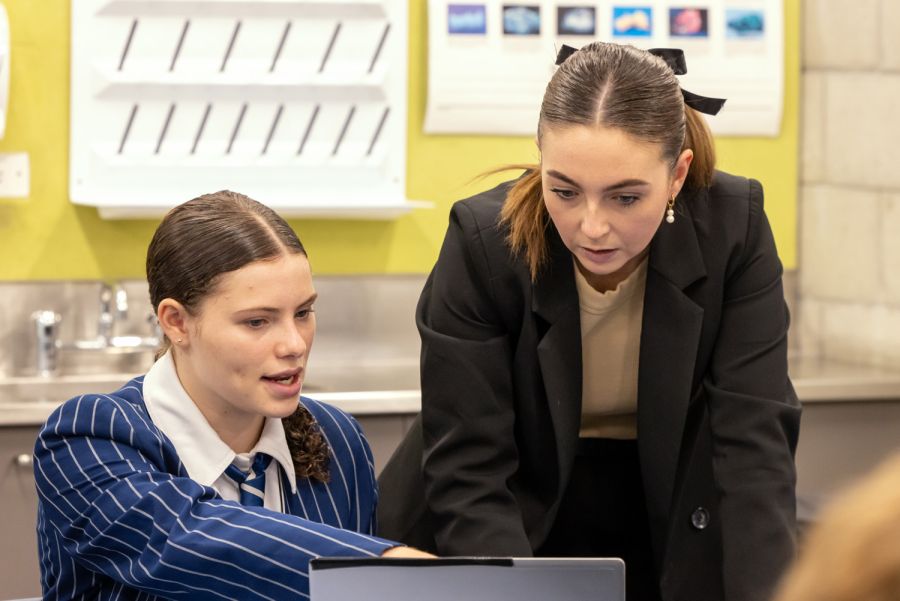Parenting Insights from Netflix’s ‘Adolescence’
25 March 2025
The Netflix series Adolescence has sparked important conversations among parents and educators. A gripping and deeply unsettling drama, it explores the complex mix of social, emotional, and societal challenges that can spiral into devastating consequences for young people.
At St Andrew’s, we believe it’s important to reflect on the themes raised in Adolescence and the conversations it’s generating in homes, schools, and online forums. Issues such as mental health, social media, toxic masculinity, and online subcultures such as the manosphere are at the forefront, raising urgent questions about their impact on young people. Many worry about their role in fostering isolation, disconnection, and distorted power dynamics between genders. Others are reflecting on how the systems designed to protect young people often fall short. But beyond the shock and heartbreak, it raises a crucial question: How can we do better? How can we, as the trusted adults in their lives, create an environment that not only safeguards their well-being but also equips them to navigate the complexities of growing up with confidence and resilience?

One of the most pressing conversations Adolescence has sparked is around the dangers of social media and the challenges young people face in the digital world. It’s a stark reminder that today’s adolescents are growing up in an online landscape vastly different from the one we experienced.
As parents, we work hard to keep our children safe in the physical world by setting boundaries, teaching them to navigate risks, and stepping in when needed. But are we doing the same in the digital world? The harsh truth is that many young people are under parented online, left to navigate social media without the guidance or safeguards they need.
So, what do we need to keep front of mind to help our young people stay safe in an increasingly complex virtual world?

1. Be Present and Foster Open Conversations
Adolescence is a powerful reminder of how much parental presence and connection matter during the teenage years, even when adolescents are seeking independence. By creating a safe, non-judgmental space where young people can choose to express emotions like loneliness, frustration, or insecurity, we help them process these feelings in a healthy way. Being present during these vulnerable moments strengthens our connection with them and enables us to guide them more effectively through life's complexities.
Experts recommend listening without immediately jumping into problem-solving and approaching these conversations with open, non-judgmental curiosity to better understand adolescents' challenges. It’s important to remember that teenagers don’t want lectures; instead, it’s far more effective to keep the door open by listening and asking thoughtful, inquiring questions about their online experiences. These conversations not only help guide young people through digital dilemmas but, most importantly, strengthen trust.
By modeling open communication, we show them that it’s safe to share their opinions and concerns. While these discussions can feel emotionally challenging for parents, small, consistent check-ins are key to maintaining trust and building connection. It’s about being available and showing you care in everyday moments. Sometimes, a bid for connection isn’t about talking at all, it’s simply about being present.
2. Set Clear Boundaries
At St Andrew’s, we encourage students to be mindful of their screen time, and our StAC Unplugged policy sets clear boundaries around technology during the school day. At home, small shifts, like keeping mealtimes and bedtime tech-free, can create valuable moments of connection. Given the impact of screens on sleep, it’s especially important that devices stay out of bedrooms.
Finding the right balance isn’t about strict rules but about guiding young people to develop healthy habits. Encouraging hobbies, sports, and in-person activities helps ensure screens don’t take over. Parental controls can support age-appropriate use. Research tells us that involving your child in setting limits fosters responsibility and trust. One way to do this is by co-creating a family tech agreement, making your expectations clear while giving young people an opportunity to contribute to how best create boundaries.

3. Emphasise Readiness and Responsibility
Treat social media use as a skill to be learned. Dr Thema Bryant, President of the American Psychological Association, compares social media readiness to earning a driver’s license. Just as young people must undergo training and demonstrate responsibility before driving, social media use requires readiness and preparation. She emphasises that parents should provide hands-on guidance during early adolescence (up to age 15), teaching teens the skills they need to navigate digital spaces safely and meaningfully. Over time, your child will develop digital maturity and an awareness of online risks. Experts such as Jonathan Haidt suggest delaying independent social media use until age 16 and limiting daily screen time on phones to two hours.

4. Role Model Healthy Technology Habits
Lead by example – take regular breaks from your screen, avoid devices before bed, and stay present during conversations. Young people notice the habits of the adults around them, so demonstrating a balanced approach to technology can be more powerful than simply setting rules. Share your own screen time challenges and work together to create healthy habits, whether it’s a family-wide tech-free hour or a shared commitment to mindful device use.
5. Encourage Digital Safety and Critical Thinking
Equip your child with the skills to evaluate online information, recognise manipulation, and think critically about what they consume. Discuss how social media algorithms shape their feeds and encourage mindful engagement, not just passive scrolling. To do this, it is important that adults take time to become familiar with the sites young people are engaging with. Through our curriculum, students are taught to think critically about how to use technology, so it has a positive impact on their overall well-being.

How Can We Do Better?
The conversations sparked by Adolescence serve as an urgent call, reminding us that young people need our presence, guidance, and active support both online and offline. As trusted adults, we must not only set boundaries but also create safe and non-judgemental spaces that foster open dialogue and emotional vulnerability.
We cannot shield adolescents from every challenge they will encounter in a complex and ever-changing digital world, but we can prepare them. We can teach them to understand emotions, think critically, to make values-based decisions, to recognise risks, and to find meaning in real-world connections. Most importantly, we can remind them, through our actions as much as our words, that they are not alone. At St Andrew’s College, we are committed to working alongside you to navigate these challenges, ensuring our students have the support, skills, and safeguards they need to flourish.
For those interested, Adolescence offers an intense, powerful and thought-provoking portrayal of the challenges young people face in today’s digital world. However, it is an unsettling drama that some may find difficult to watch. If you do choose to engage with it, we encourage viewing it as a starting point for deeper reflection and conversation.
Alternatively, we recommend reading Jonathan Haidt’s (2024) The Anxious Generation, a valuable resource for understanding the potential impact of social media and screen time on adolescents today. While we have appreciated Haidt's insights, it’s important to note that some mental health professionals and academics have critiqued the book for oversimplifying the complex and multifaceted causes of mental health issues. Haidt’s work provides excellent insights into one piece of this complex puzzle.

Netsafe, an organisation dedicated to keeping young people safe online, has an online safety hub offering practical tools, and resources to support parents and caregivers. These resources explore topics such as social media, phone access, cyberbullying, sexting, and body image. Netsafe offer conversation starters for talking to your children about online safety. They also provide some guidance on creating a family online treaty. Childnet also provides some useful resources. They are a UK based organisation that works internationally to provide resources for parents and young people to understand and deal with online risks.
Parenting and teaching in the digital age is undeniably complex, and there are no perfect solutions. However, it is important to remember that many young people are often more resilient, capable, and aware than we sometimes give them credit for. Their brains are wired for learning, adaptation and social awareness, so with the right support, they can develop the skills to navigate the online world with confidence and integrity. As trusted adults, our role is not to shield them from every challenge but to walk alongside them offering guidance, setting boundaries, and keeping conversations open.
If Adolescence has sparked important discussions in your home, how are you approaching these conversations? What strategies have helped you support your children in developing a healthy relationship with technology?
Written by Head of Well-being, Kerry Larby
Related Posts


